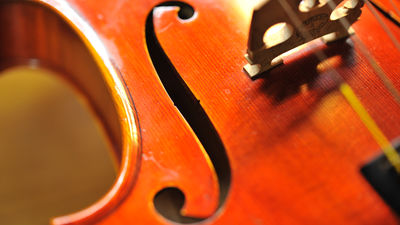Is the conclusion that 'there is no big difference' between playing Stradivarius and the modern violin in a blindfold true?

In 2010, an experiment was conducted to investigate whether modern musical instruments and old famous instruments really have different tones by playing the
Blind-tested soloists unable to tell Stradivarius violins from modern instruments | Article | The Strad
https://www.thestrad.com/blind-tested-soloists-unable-to-tell-stradivarius-violins-from-modern-instruments/994.article
In a 2010 experiment, professional violinists rated modern violins more than Stradivarius, and researchers conclude that 'Stradivarius is not much different from modern musical instruments.' However, according to the violinists who participated in the experiment, the performers were asked during the experiment to 'evaluate which violin they liked' and not to 'age the violin'. Insist.
What is the true value of a precious musical instrument that is judged to be 'not much different from modern musical instruments'?-GIGAZINE

Therefore, in 2012, another experiment was conducted at the theater in Vincennes, Paris, to compare the sounds of the violin. The experiment was led by acoustics expert and Frenchman Claudia Fritz, American violin maker Joseph Curtin, and stringed instrument expert Van Tao. 'The problem with the previous experiment was that only a few top-ranked violinists were able to participate, and they were accustomed to playing instruments in all situations, so the experiment took place in a hotel room. That's it. '
Therefore, 10 professional violinists were invited as performers this time, and the number of violins was doubled from the previous time to 12, which was made by 5 Stradivarius, 1 18th century Italian violin, and a modern stringed instrument maker. Six violins were prepared. In addition, the location of the experiment was changed to a rehearsal room for music and a concert hall, and the performance was divided into two parts for 75 minutes each.

The violinists evaluated 12 violins based on 'Which violin is best for me to use at a concert'. During the performance, the experiment was conducted with the stage lights very dim, wearing goggles used by welders to make the violin visually indistinguishable. It was OK to play the 12 violins prepared and the violins that he owns alternately and compare them. They were also allowed to choose with or without piano accompaniment, listen to the audience's impressions of the performance, and listen to the performances of other violinists.

In the first experiment, I was instructed to play the violin and 'choose four favorite violins and sort them in the order I liked' and 'specify the violins I didn't like'. Based on this result, the experimenter gave 4 points to each violinist's favorite violin, and 1 point was deducted from the violinist who judged that he did not like it.
As a result of the experiment, the violin made in modern times won the top with a total of 26 points. This violin was rated by four violinists as 'the most favorite violin', another four violinists as 'the second favorite violin' and two violinists as 'disliked'. Violinist. On the other hand, Stradivarius had the lowest rating, with a score of -9 points. Arranging all 12 violins in order of point acquisition, 1st and 2nd place was modern violin, 3rd place was Stradivarius made in the golden age, 11th place was modern violin, and the lowest was Stradivarius. .. As in the 2010 experiment, modern violins were highly evaluated.
In the second experiment, the violinists decide within 30 seconds whether the violin they are playing is old or new after the performance. The result was 31 correct answers, 33 incorrect answers, and 5 ambiguous answers.
In response to this result, the three researchers who led the experiment said, 'Violinists can clearly distinguish between their favorite violin and the violin they don't like, but the age at which the violin was made. The correct answer rate was a little better than by chance. In order to produce the sound peculiar to Stradivarius, the performer must have a wealth of playing experience. ' 'The most important finding for me is that while violinists could easily distinguish their favorite violins, they couldn't distinguish between Stradivarius and modern violins, which means that top-class violinists are new. When looking for a violin, it doesn't matter what age or country the violin was made. '
In addition, you can watch all the experiments from the following movie.
2012 --The Paris Double-Blind Violin Experiment --YouTube
Related Posts:






